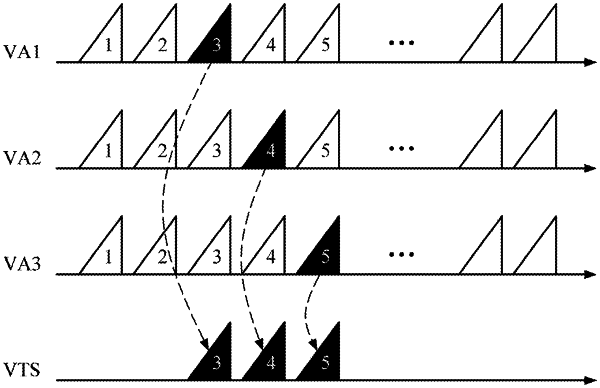| CPC G01S 7/4056 (2013.01) [G01S 13/343 (2013.01); G01S 13/583 (2013.01)] | 10 Claims |

|
1. A signal processing method of a time-division-multiplexed (TDM) frequency modulated continuous wave (FMCW) radar apparatus having an antenna array in which transmitting antennas and receiving antennas are arranged such that a plurality of virtual antennas have the same position, the method comprising:
a wireless transmission operation of transmitting FMCW radar waveform signals that are configured such that at least three peculiar chirps included in a chirp loop of each of radar signals transmitted by the plurality of virtual antennas having the same position, are respectively positioned in consecutive time slots and have different periods;
a wireless reception operation of demodulating baseband FMCW radar signals from FMCW radar waveform signals reflected by a target, sampling difference signals between the baseband FMCW radar signals and the transmitted signals, transforming the difference signals into digital signals, and outputting the digital signals;
a spectrum analysis operation of determining and outputting beat frequencies and Doppler frequencies from the signals output in the wireless reception operation; and
a Doppler frequency determination operation of measuring phase differences between the at least three peculiar chirps, which are respectively positioned in consecutive time slots, have different periods, and are received at the plurality of virtual antennas in the wireless reception operation, and determining and outputting a true Doppler frequency from the measured values and the Doppler frequencies output in the spectrum analysis operation,
wherein in the Doppler frequency determination operation,
a phase difference between the peculiar chirps is measured from at least three peculiar chirp signals, which are respectively positioned in consecutive time slots and output in the wireless reception operation, and the Doppler frequency, at which theoretically calculated phase difference values are most similar to measured phase difference values, is determined as the true Doppler frequency and output.
|